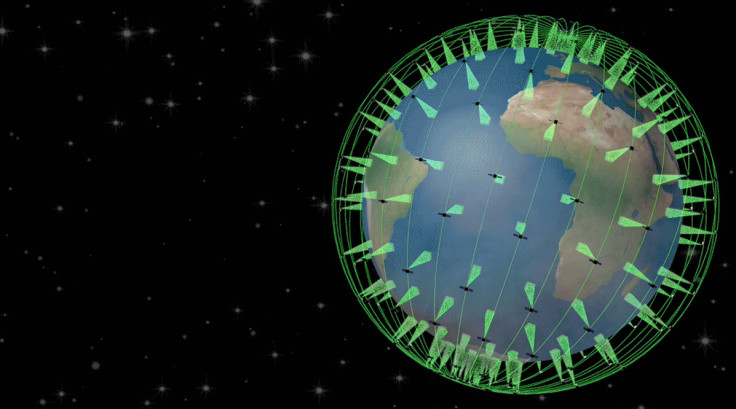Nasa wants a global wildfire early warning network of 200 sensors on satellites

Nasa is working on building a global network of sensors on board satellites to help detect and monitor wildfires occurring anywhere in the world, 24 hours a day, seven days a week.
The FireSat network is currently being developed by Nasa's Jet Propulsion Laboratory (JPL) and San Francisco-based startup Quadra Pi R2E. It was conceptualised by Nasa back in 2011 and once built, will consist of a constellation made up of over 200 sensors on satellites orbiting the Earth.
Each satellite will have thermal infrared imaging sensors on it, so together the constellation can completely map the Earth's surface to detect fires that are at least 35-50ft (10-15m) wide within 15 minutes of when the fires begin.
2015 has been a bad year for fires, with the California wildfires caused by drought raging for three months; haze from Indonesia's worst ever wildfires caused record levels of air pollution in neighbouring Southeast Asian countries; and wildfires caused flight disruptions and evacuations in Spain, Rome and Greece.
The problem is that wildfires often begin in remote areas and can burn for hours or days before they are detected, by which time they have caused a great deal of damage, have become difficult to contain and they are causing a significant risk to human and animal life.
FireSat could transform emergency fire detection

But FireSat could change this as it would be able to detect wildfires, volcanic eruptions and fires from accidents like oil spills much faster than today's heat-seeking satellites, which can only detect fires twice a day and send through large, high-resolution images.
The new network would be able to send out a low-resolution image of the fire once a minute, together with the fire's exact geographic coordinates, which would enable meteorological services to have almost real-time communications with the satellites.
Of course, there are already quite a few satellites in space, which is why Nasa wants to have over 200 sensors, not satellites, in its network. The plans is to harness any existing sensors on satellites already in orbit and put them to work to be part of the network, such as the Moderate-resolution Imaging Spectroradiometer (MODIS) sensor onboard the Terra satellite.
Nasa also has an existing network of sensors on Terra and Aqua set up in 2003 that work together with autonomous satellite observation to study wildfires, volcanoes, flooding and events related to ice freezing and thawing.
The data collected by these sensors will be sent back to Earth using a modified version of JPL's existing Regional Hydrological Extremes Assessment System and displayed in the FireSat app for iOS and Android mobile devices, which will give users historical, almost real-time and projected information about the fire's burning pattern, as well as data on vegetation, carbon and hydrology in the area.
Seeking support from local forestry organisations
Nasa and Quadra hope to get FireSat up and running by June 2018, and it will cost $30m (£20m) to complete the non-profit project. Quadra has already solicited $20m in funding from non-US government grants and investment funding, and anticipates $10m in debt funding once pre-operational licensing contracts are secured, however the firm is also looking at crowdfunders and support from forestry and environmental agencies in multiple countries.
"This Kickstarter campaign has been developed to present the FireSat opportunity to the general public to determine whether enough grass-roots interest exists to advance the project," Quadra wrote on its Kickstarter campaign page.
"The results of this campaign will serve to mobilise JPL's initial design work and inform participation decisions by other public/private organisations currently contemplating support for the project."
Backers can choose to support FireSat by pledging at least $1 to receive rewards that include having your name printed on a space-bound sensor to being given a personal tour of FireSat's Mission Control when it's ready in 2017.
So far, 13 backers have pledged a total of $5,227. With 24 days left to go, the FireSat campaign on Kickstarter hopes to raise $280,000 by 17 December 2015.
© Copyright IBTimes 2025. All rights reserved.






















